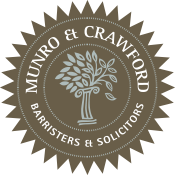
What is Probate?
Probate is a legal procedure that verifies the legitimacy of a will and the executor’s authorization to carry out its provisions. In British Columbia, the Supreme Court oversees the administration of probate.
The individual appointed as the executor by the testator must initiate the probate application. Upon approval, they gain the legal mandate to allocate the estate’s assets in accordance with the stipulations of the will.
The probate process encompasses various steps, including submitting an application, informing beneficiaries, settling debts and taxes, and distributing the remaining assets, among other procedural elements.
When is Probate Required?
Probate is typically necessary when the deceased exclusively owned assets or held a substantial sum in a financial institution. Financial institutions often impose a threshold; if the deceased’s account surpasses this limit, probate is required before funds can be released.
Solely owned real estate by the deceased also mandates probate. If real estate was jointly owned, it typically transfers to the surviving owner without probate, but any property that is not jointly owned requires probate for the transfer.
How Long Does Probate Take?
The length of time probate takes varies considerably and depends on the complexity of the estate. However, there is always a 21-day minimum waiting period and most of the time you can expect the probate process to take between two and three months.
How to Probate a Will
1. Search for a Wills Notice
Before initiating the probate application, it is essential to conduct a search for a Wills Notice through the Vital Statistics Agency, utilizing Form P18: Application for Search of Wills Notice. This search is crucial for verifying if the deceased individual had submitted a Wills Notice, which serves as an indication of having created a will and provides information about its location.
2. Prepare the Probate Application
The executor of the will, will need to prepare and submit the probate application. To do this, the following forms must be completed:
- Form P8: Supporting Affidavit for Estate Grant Application
- Form P3: Short Form Affidavit for Probate or Administration Grant with a Will
- Form P4: Long Form Affidavit for Probate or Administration Grant with a Will
- Form P10: Affidavit of Assets and Liabilities for Domiciled Estate Grant
- Form P2: Estate Grant Application
- Form P1: Notice of Upcoming Estate Application
3. Notify Beneficiaries
The executor will need to send all beneficiaries a notification that they have been named in the will. The beneficiaries must be sent a copy of the will along with the notice.
4. Submit Probate Application & Pay Fees
Once the required forms and notices have been completed, the executor can submit the probate application to the BC Probate Registry. At this point, probate fees will need to be paid. Probate fees are calculated based on the gross value of the estate.
5. Administer the Estate
Once probate has been granted, the executor begins administering the estate. This includes a number of responsibilities that differ depending on the particular estate, but typically include:
- Paying debts and taxes
- Distributing assets to beneficiaries
- Closing the estate
Let Us Help
Probate can be complex and time-consuming. The lawyers at Munro & Crawford can help make the process less overwhelming by lending support in various ways, from acting as the sole executor for you to providing guidance as you work through the process yourself.










Write a comment: